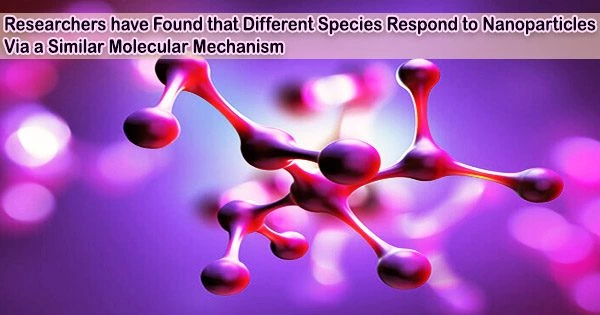Researchers at Tampere University’s FHAIVE FHAIVE (Finnish Hub for Development and Validation of Integrated Approaches) have identified a novel response mechanism specific to nanoparticle exposure that is shared by many species.
Doctoral Researcher Giusy del Giudice has discovered an ancestor epigenetic mechanism of defense that explains how various species, from humans to simpler creatures, adapt over time to this type of exposure by analyzing a sizable collection of datasets concerning the molecular response to nanomaterials.
An Ancestral Molecular Response to Nanomaterial Particulates, a new article in the journal Nature Nanotechnology, presents the findings of the study directed by Professor Dario Greco of the Faculty of Medicine and Health Technologies.
“We have demonstrated for the first time that there is a specific response to nanoparticles, and it is interlinked to their nano-properties. This study sheds light on how various species respond to particulate matters in a similar manner. It proposes a solution to the one-chemical-one-signature problem, currently limiting the use of toxicogenomic in chemical safety assessment,” Director of the FHAIVE, Professor of Bioinformatics at Tampere University Dario Greco says.
Linking nanoparticles and immunity
The implications of this study go beyond the field of toxicology. The COVID-19 pandemic brought to light how crucial immune activation is in determining how a viral infection will manifest clinically. COVID-19 affected the human population more severely in locations with higher levels of pollution.
“Our results uncover an important link between understanding the basic defence mechanisms in living organisms and their immune functions,” Greco points out.
We have demonstrated for the first time that there is a specific response to nanoparticles, and it is interlinked to their nano-properties. This study sheds light on how various species respond to particulate matters in a similar manner. It proposes a solution to the one-chemical-one-signature problem, currently limiting the use of toxicogenomic in chemical safety assessment.
Professor Dario Greco
“When it comes to drugs or viruses, we have understood that any exposure or infection leaves a trace on our immune system, and that this trace will affect the way we respond to future agents. Now, we have evidence that even particulate matter primes our immunity,” says Giusy del Giudice, the first author of the scientific publication.
Air pollution has long been known to have a negative impact on respiratory health, but it wasn’t until recently that researchers from The Francis Crick Institute established that it is also one of the main risk factors for lung cancer among non-smokers. The impacts of particulate matter on the immune system were a factor in both COVID-19 and lung cancer.
“The association between particulate matter and immune activation is of utmost importance and may lead to crucial epidemiological implications,” del Giudice says.
A step closer to planetary health
Since all living things on Earth are interconnected and the consequences of one species will eventually spread to others, the COVID-19 pandemic has also taught us vital lessons about planetary health. In this sense, the findings of this study provide fresh opportunities for developing comprehensive models that forecast the impacts of chemical exposures on a variety of species simultaneously.
“Our results move in this direction by describing fundamental defence mechanisms common to many species throughout the tree of life,” del Giudice says.
Nanotechnology is crucial in a variety of industries, including medical, energy, and environmental science. Chemical substances or materials having particles as small as 1 to 100 nanometers, or about a third of a human hair, are referred to as engineered nanomaterials.
Numerous consumer products on the market today include nanoparticles, necessitating study for any potential negative impacts on human health and the environment. Traditional toxicology cannot keep up with this technological advancement since it relies on animal or in vitro experiments to track phenotypic changes in response to exposures.
“We cannot test every new nanomaterial on every possible species on Earth. We need innovative ways to reliably assess possible dangerous products as quickly as possible. Scientific evidence such as the one generated in this study can help to develop new models that do not require large amounts of animal experiments,” Grego says.
This study was conducted as part of the EU project NanoSolveIT, which develops computer models to evaluate the safety and health of manmade nanomaterials in the environment.
The study was led by FHAIVE, and it involved researchers from universities across Europe, as well as in the United States, Australia, South Africa, Japan, and South Korea. Moreover, FHAIVE also develops alternatives to animal testing at a national level.





